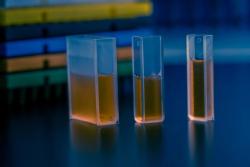
OR WAIT null SECS
- About Us
- Advertise
- Contact Us
- Editorial Info
- Editorial Advisory Board
- Do Not Sell My Personal Information
- Privacy Policy
- Terms and Conditions
© 2025 MJH Life Sciences™ , Pharmaceutical Technology - Pharma News and Development Insights. All rights reserved.
Development of Taste-Masked Oral Reconstitutable Suspension of Cetirizine Dihydrochloride
The aim of this study was to prepare taste-masked drug-resin complex using ion exchange resin Kyron T-134.
Cetirizine dihydrochloride (CTZ) is a second-generation piperazine derivative, a potent H1 selective antihistaminic agent. Its extreme bitter taste results in poor patient compliance. The aim of this study was to prepare taste-masked drug-resin complex (DRC) using ion exchange resin Kyron T-134. The DRC was evaluated for effect of variables such as resin ratio, pH, temperature, soaking time of resin, and stirring time on drug loading and taste. Reconstitutable suspension was prepared using drug-resin complex and other pharmaceutical excipients in suspension. Formulated reconstitutable suspension was evaluated for parameters before reconstitution, such as flow properties and drug content, and after reconstitution, such as aesthetic appeal, sedimentation rate, redispersibility, particle size, viscosity, pH, drug content, and in-vitrodissolution study. During the evaluation period of 14 days, no significant change was observed in pH, viscosity, particle size, and drug content. From the results, it is concluded that effective taste masking of CTZ was achieved using Kyron T-134 and successfully evaluated in reconstitutable suspension.
.
Peer-Reviewed
Submitted: Jan. 28, 2019
Accepted: Aug. 16, 2019
About the author
Gayatri C. Patel*, gayatripatel.ph@charusat.ac.in, is associate professor at Ramanbhai Patel College of Pharmacy, Charotar University of Science & Technology, Gujarat, India.
*To whom all correspondence should be addressed.
Article Details
Pharmaceutical Technology
Vol. 44, No. 1
January 2020
Pages: 48–52
Citation
When referring to this article, please cite it as G.C. Patel, “Development of Taste-Masked Oral Reconstitutable Suspension of Cetirizine Dihydrochloride,”Pharmaceutical Technology 44 (1) 2020.

 Download Issue: Pharmaceutical Technology-01-02-2020
Download Issue: Pharmaceutical Technology-01-02-2020

